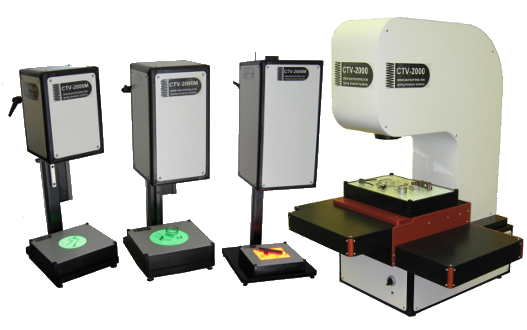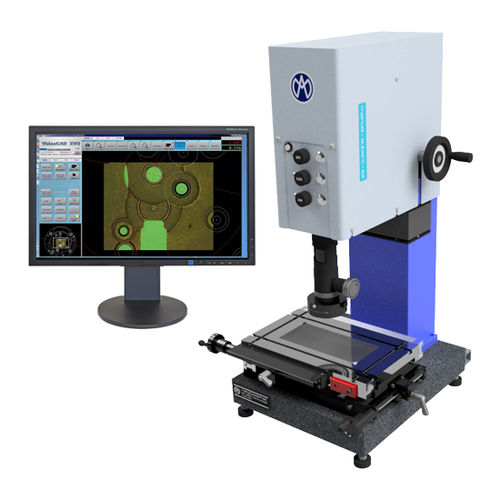A complete walkthrough to deploying an optical measurement system in your facility
A complete walkthrough to deploying an optical measurement system in your facility
Blog Article
The Duty of Optical Measurement Solutions ahead of time Width Techniques
Optical measurement systems have changed width, bringing a level of accuracy that was once unthinkable. You may be stunned to find out just how these technologies, based on basic principles like representation and interference, are used across numerous industries. Their non-contact abilities not just enhance precision yet additionally enhance processes. As you explore additionally, you'll discover just how these systems are forming the future of dimension and top quality control.
The Evolution of Metrology: A Historic Point Of View
As you explore the background of width, you'll locate that its evolution mirrors mankind's quest for accuracy and standardization. From old human beings utilizing body parts as units of dimension to the growth of standardized weights and actions, each action reveals our wish for precision. The Egyptians developed the pyramids using specific measurements, while the Romans progressed design with their advanced measuring tools.
Throughout the Renaissance, clinical advancements shifted the emphasis toward a lot more empirical methods, leading the way for modern-day metrology. The introduction of the statistics system in the late 18th century marked a considerable landmark, developing universal requirements. Throughout the 20th century, technical advancements additionally transformed metrology, allowing very exact measurements in different areas.
Today, assessment remains to develop, integrating digital innovation and automation. This history highlights not just the relevance of dimension but likewise our unrelenting search of boosting precision and consistency in our increasingly complex globe.
Concepts of Optical Measurement Solutions
Understanding the concepts behind optical dimension systems is essential for accurate outcomes in metrology. You'll want to consider fundamental optical principles, measurement accuracy elements, and efficient system calibration methods. Each of these components plays a vital duty in guaranteeing your dimensions are exact and trustworthy.
Essential Optical Principles
While exploring optical dimension systems, you'll encounter fundamental optical concepts that develop the backbone of accurate data purchase. Light behaves in foreseeable ways, and recognizing these actions-- like reflection, diffraction, and refraction-- is vital for reliable measurements. You'll utilize lenses and mirrors to adjust light and concentrate it onto your target, guaranteeing accuracy in your readings. In addition, the wave nature of light enables interference patterns, which can improve measurement resolution. Polarization can additionally play a crucial role in distinct signal from sound, improving the quality of your results. By understanding these concepts, you'll be furnished to leverage optical modern technologies efficiently, paving the means for improvements in metrology and ensuring your dimensions are both trustworthy and repeatable.
Measurement Precision Elements
To attain high dimension precision in optical systems, a number of elements come right into play, influencing the integrity of your results. High-grade lenses and detectors lower aberrations and sound, guaranteeing your measurements are precise. By addressing these elements, you can boost the general performance of your optical measurement systems, leading to more exact and reliable outcomes in your assessment applications.
System Calibration Techniques
Attaining high dimension precision is just component of the formula; appropriate system calibration methods are equally crucial in optical dimension systems. Next, employ known measurements to validate the system's output and make necessary adjustments. With these strategies, you'll improve the reliability of your optical measurement system.
Trick Technologies Behind Optical Measurement
Optical measurement systems rely on numerous crucial modern technologies that enhance precision and efficiency in metrology. One important modern technology is interferometry, which makes use of the interference of light waves to measure little variations and surface area abnormalities with severe accuracy. You'll likewise locate laser scanning systems, which catch in-depth 3D data of objects promptly, making them invaluable for dimensional evaluation.
Furthermore, CCD and CMOS sensors play a significant duty in transforming light into electric signals, permitting high-resolution imaging and accurate dimensions. Advanced algorithms for picture processing further boost measurement accuracy by evaluating information in genuine time, straining sound and improving features.
Lastly, fiber optics supply adaptability and the capacity to measure in tough environments while preserving signal stability. By leveraging these technologies, you can accomplish superior cause your width tasks, making certain that your measurements are both trustworthy and precise.
Applications of Optical Dimension in Market
As sectors increasingly demand precision and performance, the applications of optical dimension systems have actually come to be important throughout different sectors. In production, these systems help you keep track of dimensions and resistances in real-time, making certain quality assurance without lengthy hands-on checks. In the auto industry, optical dimensions aid in aligning elements with accuracy, boosting safety and security and performance.
In electronics, you're utilizing optical approaches to evaluate min attributes on circuit boards, finding issues that might bring about failures. The aerospace sector take advantage of non-destructive screening techniques, allowing you to evaluate materials and elements without endangering their integrity.
Optical measurement also plays an important function in fabrics, making sure textile measurements fulfill specific requirements. optical measurement systems. With their ability to supply high-resolution data rapidly, these systems empower you to make informed decisions, enhance procedures, and inevitably drive technology across your market
Enhancing Accuracy and Efficiency in Dimensions
When you think of improving accuracy in measurements, precision in your dimension techniques is vital. By enhancing these procedures, you can achieve quicker outcomes without compromising quality. Allow's discover just how taking on advanced optical dimension systems can elevate both precision and performance in your work.
Precision in Measurement Strategies
Accuracy in dimension techniques is essential for accomplishing dependable cause assessment, especially because small inconsistencies can bring about substantial errors. By utilizing advanced optical dimension systems, you can improve the accuracy of your dimensions. These systems provide high-resolution data that help you spot also the smallest variants in dimensions. You minimize uncertainties and improve repeatability in your procedures when you adopt these modern technologies. In addition, accurate dimensions permit you to keep quality control, guaranteeing that items meet stringent specifications. This not just enhances your reliability but also improves consumer satisfaction. Purchasing precision measurement devices ultimately causes increased effectiveness, lowered waste, and maximized manufacturing cycles. Welcoming these strategies will change your technique to metrology, yielding impressive results.
Improving Dimension Procedures
To boost accuracy and performance in measurements, streamlining your dimension processes is necessary. Start by embracing optical measurement systems that give real-time information, minimizing the time invested in hands-on recording. These systems commonly integrate perfectly with existing software application, permitting you to automate data collection and evaluation.
Following, systematize your measurement protocols. By carrying out consistent treatments, you lessen irregularity and improve repeatability. Don't neglect to on a regular basis adjust your devices to assure its accuracy.

The Influence of Optical Dimension on R & D
As scientists undertaking to push the limits of development, optical measurement systems have actually ended up being crucial tools in the growth procedure. These systems supply you with accurate, real-time information that boosts your ability to examine complex materials and frameworks. In various fields, from biotechnology to aerospace, you rely upon optical dimensions to enhance layouts and improve product performance.

With high-resolution imaging and non-contact methods, you can decrease example disruption, enabling for more precise results. This capability to record minute information increases your R&D cycle, letting you repeat layouts rapidly and successfully. Optical measurement fosters cooperation throughout techniques, as the data generated is usually easily interpretable and shareable.
Ultimately, incorporating optical dimension systems into your study not just enhances efficiency however also strengthens this content your understanding of the phenomena you study. By leveraging these advanced strategies, you're much better outfitted to innovate and stay in advance in a competitive landscape.
Future Fads in Optical Measurement Solutions
With read this article the fast development of modern technology, you're most likely to see considerable shifts in optical dimension systems that will redefine their application throughout different markets. You'll observe an approach increased automation and assimilation of expert system, enabling real-time data evaluation and enhanced accuracy. Miniaturization is another fad; portable gadgets will enable dimensions in tighter areas, making them optimal for areas like aerospace and biomedical applications.
Anticipate to see systems that can run in challenging environments, supplying trustworthy dimensions in severe conditions. As these innovations merge, you'll find that optical dimension systems not only improve accuracy however also enhance operations, eventually driving innovation and effectiveness in your jobs.
Frequently Asked Inquiries
Exactly How Do Optical Dimension Solutions Compare to Typical Measurement Techniques?
Optical dimension systems offer greater accuracy and faster results contrasted to conventional methods. You'll find they record even more data points accurately, minimizing human mistake and raising reliability, making them a recommended selection in numerous applications.
What Industries Benefit Many From Optical Dimension Systems?
You'll discover industries such as aerospace, vehicle, and electronics benefit most from optical measurement systems. These markets depend on accurate measurements to ensure high quality and performance, improving efficiency and minimizing expenses through sophisticated technology.

Are Optical Measurement Solutions Expensive to Apply?
Optical dimension systems can be pricey to implement, but their accuracy and effectiveness usually warrant the cost. Buying such technology can bring about substantial long-term cost savings and renovations in top quality across various applications.
What Abilities Are Needed to Operate Optical Dimension Systems?
To run optical dimension systems, you'll require have a peek at this site solid analytical abilities, attention to information, and proficiency in software tools. Experience with optics and an understanding of measurement concepts will certainly additionally enhance your efficiency and effectiveness.
How Do Environmental Elements Impact Optical Measurements?
Ecological aspects like temperature, air, and moisture high quality can misshape optical dimensions. You'll see variants in precision due to light interference or refraction. optical measurement systems. Preserving steady problems is necessary for specific and trustworthy optical measurement outcomes
Conclusion
In recap, optical dimension systems are changing width by giving unmatched precision and efficiency. As you explore future trends, you'll see exactly how the assimilation of AI and automation will certainly proceed to boost dimension methods, driving advancement and boosting top quality control.
Attaining high dimension precision is only component of the equation; appropriate system calibration techniques are similarly vital in optical measurement systems.When you assume about improving precision in dimensions, precision in your dimension methods is necessary. By making use of advanced optical dimension systems, you can boost the precision of your measurements.To improve accuracy and effectiveness in dimensions, improving your measurement processes is essential. Exactly How Do Optical Dimension Systems Compare to Standard Dimension Techniques?
Report this page